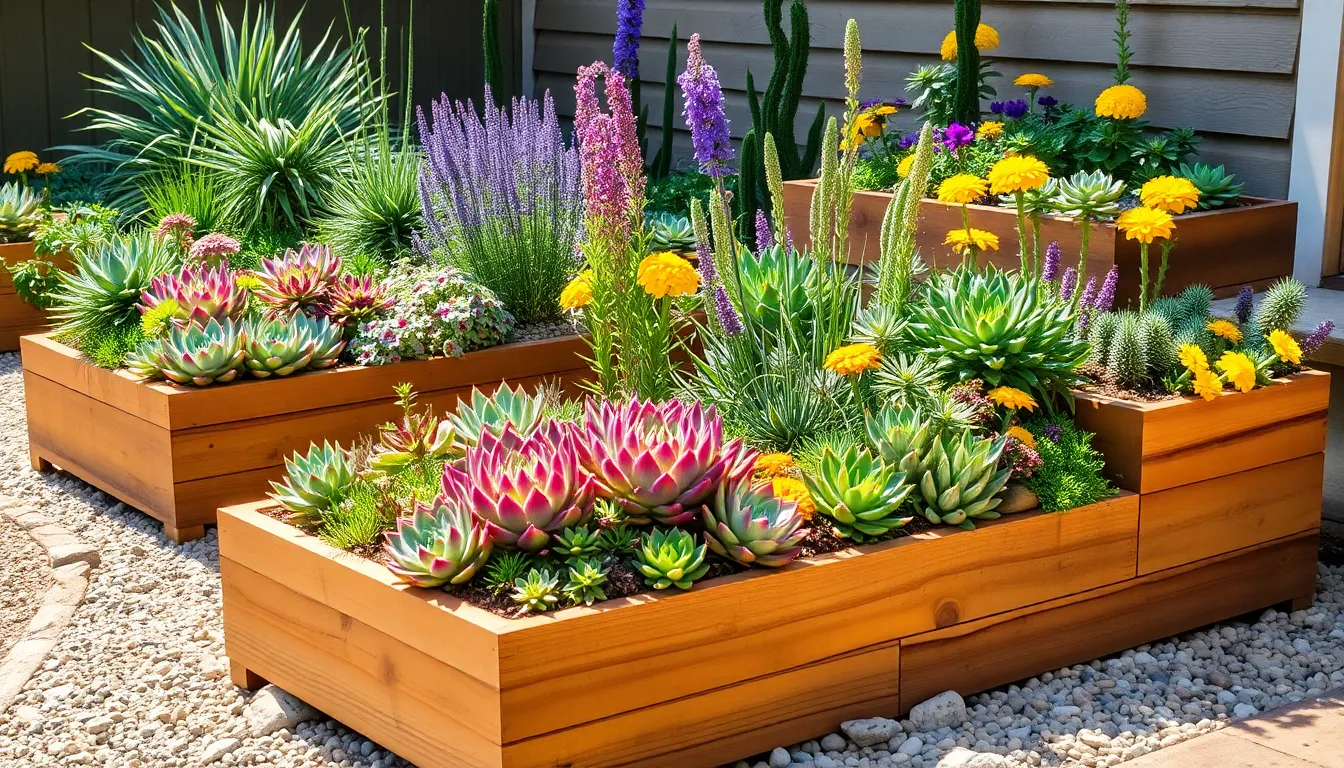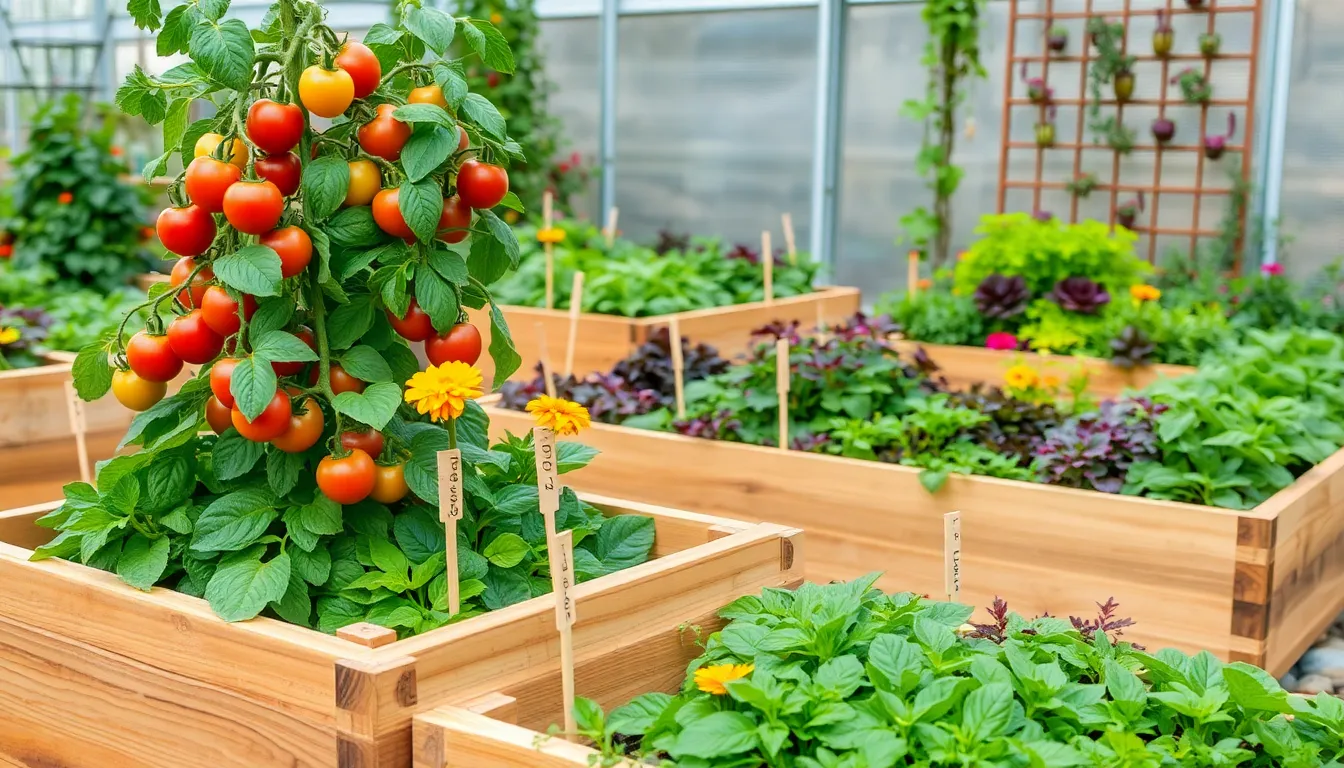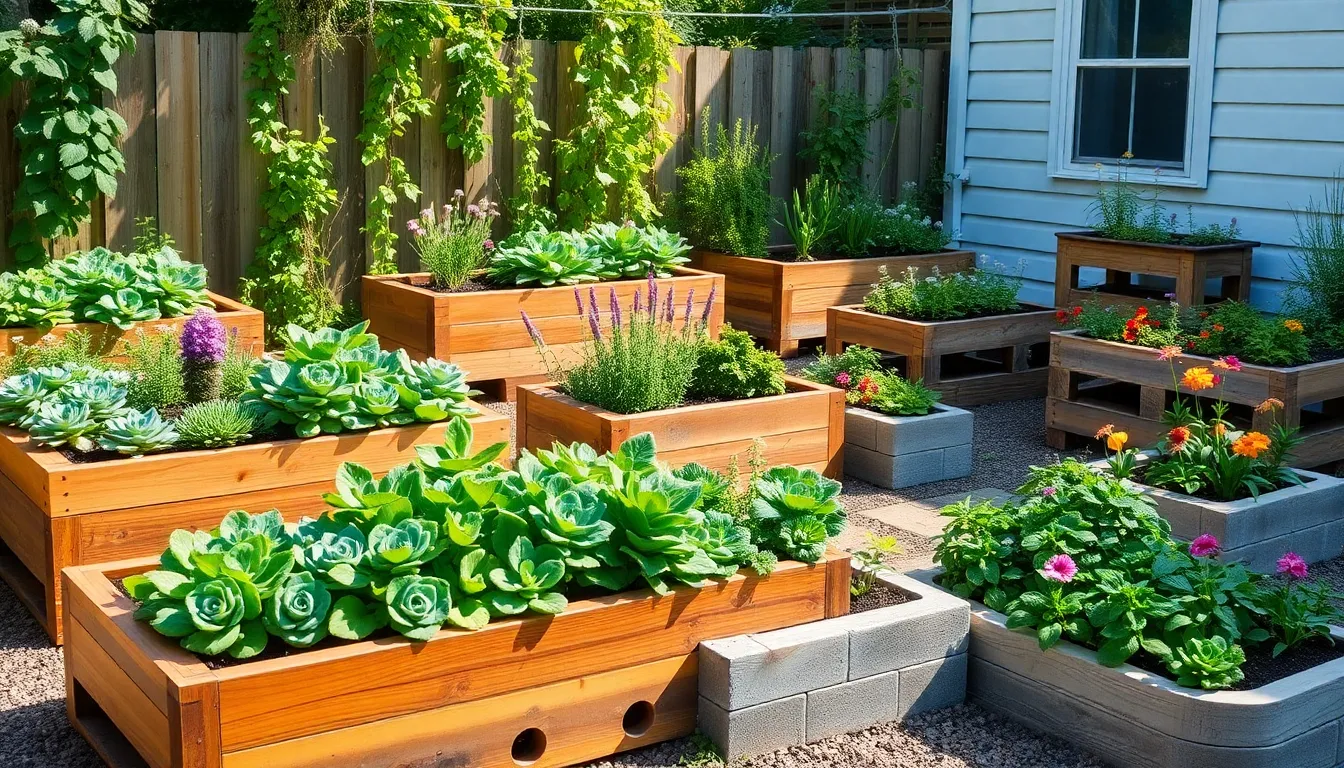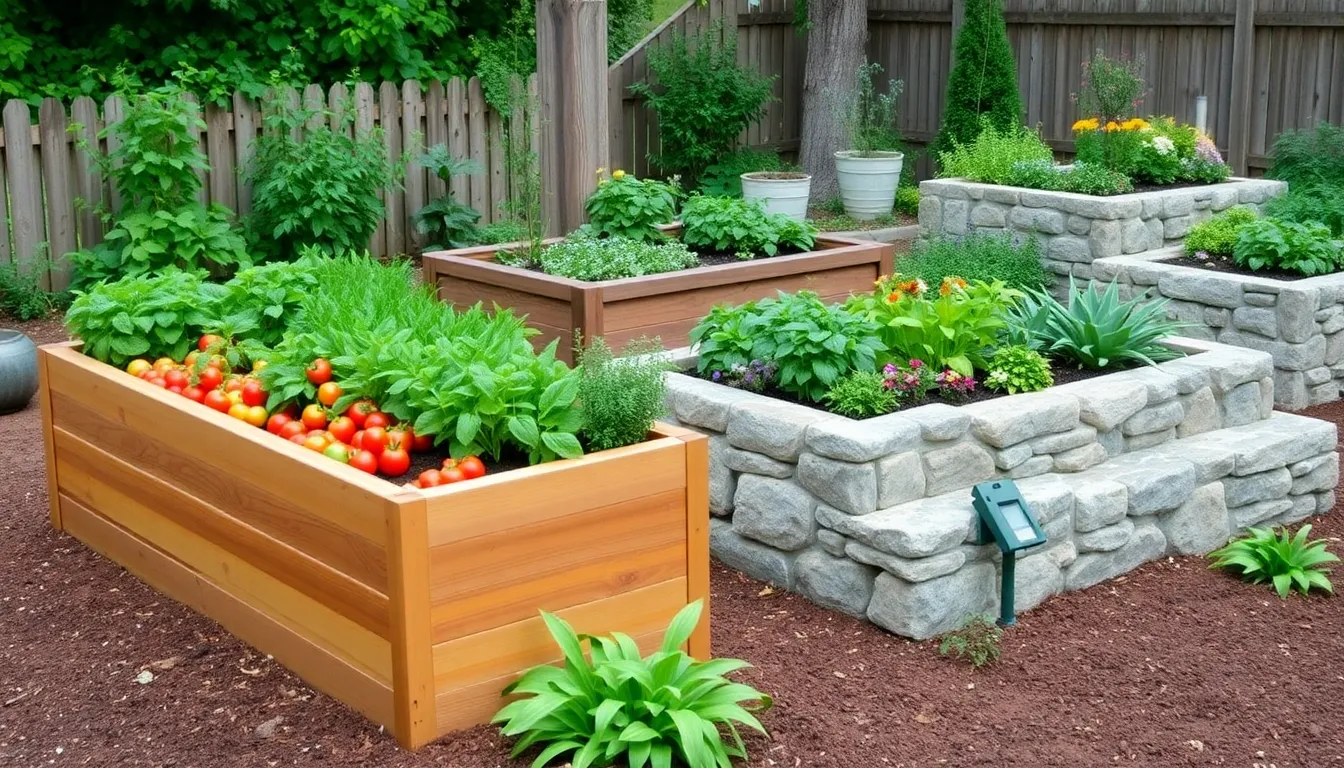Gardening is a delightful journey that connects us with nature, but it doesn’t have to be a water-sapping endeavor. For both beginners taking their first steps into the world of green thumbs and seasoned gardeners seeking to refine their craft, low-water raised bed gardening offers a sustainable path to a thriving garden. This innovative approach not only conserves water but also enriches your soil and plants, making it an ideal choice for those mindful of their environmental footprint.
In today’s world, where water conservation is more crucial than ever, adopting low-water gardening techniques can make a meaningful impact. This article will guide you through ten thoughtfully designed low-water raised bed garden plans that cater to various climates and preferences. Whether you’re dealing with a sun-drenched spot or a shady corner, these plans will help you cultivate a lush, vibrant garden with minimal water use.
You’ll discover how to optimize soil composition, select drought-tolerant plant varieties, and implement efficient watering strategies to ensure your garden flourishes even in arid conditions. Each plan is crafted to be both practical and inspiring, offering you a blueprint that simplifies the gardening process while enhancing your outdoor space. By the end of this article, you’ll be equipped with the knowledge and confidence to transform your garden into a water-wise haven, abundant with beauty and life.
Understanding Low-Water Gardening Basics
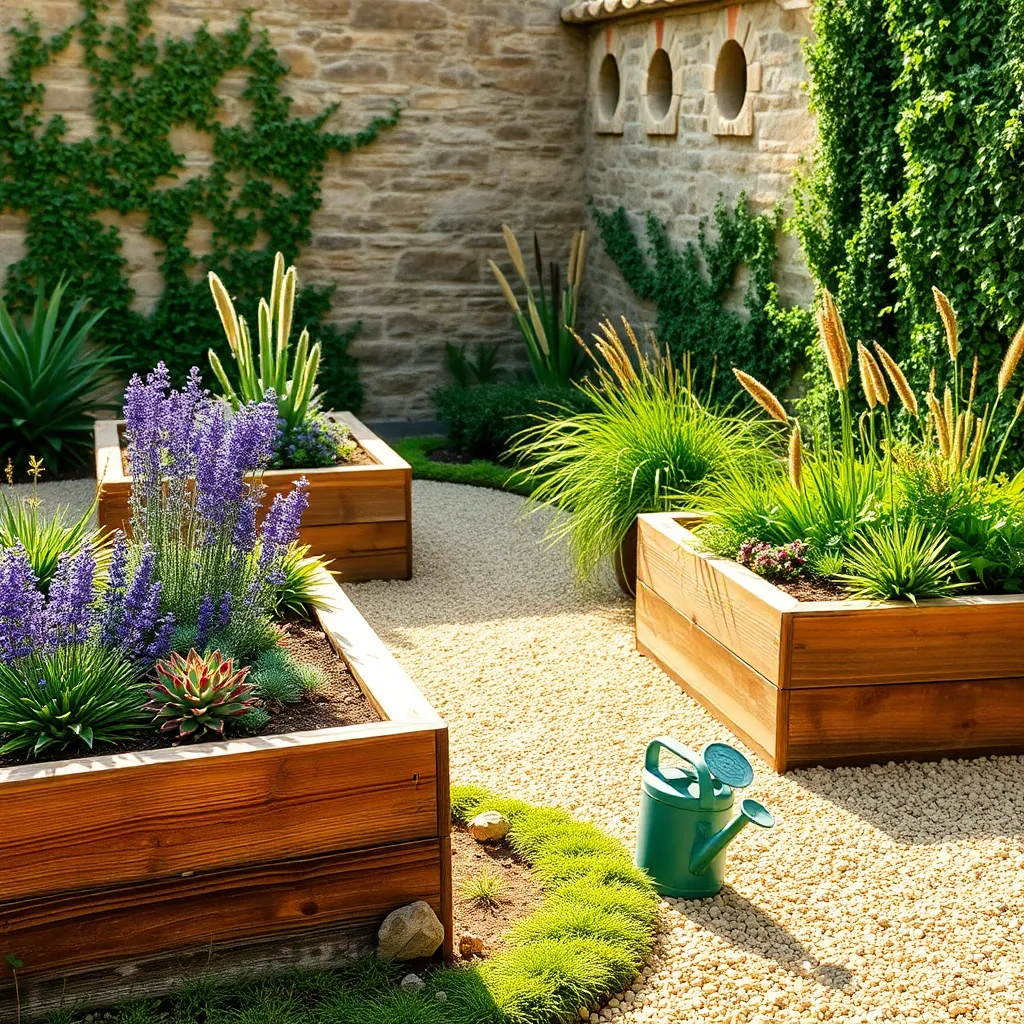
Low-water gardening, also known as xeriscaping, focuses on using minimal water without sacrificing plant health. To succeed, select plants that are naturally drought-tolerant, such as succulents or native varieties, which are well-suited to dry conditions.
Start by improving your soil’s water-retention capabilities using organic matter like compost. Amending the soil not only enhances moisture retention but also provides essential nutrients, creating a more hospitable environment for low-water plants.
Mulching is a simple yet effective practice to reduce water evaporation from the soil’s surface. Apply a layer of organic mulch, such as shredded bark or straw, around your plants, aiming for about 2-3 inches in depth to maximize moisture conservation.
Water deeply but infrequently to encourage deep root growth, which helps plants withstand dry periods. Use a drip irrigation system or a soaker hose to deliver water directly to the roots, ensuring minimal water loss through evaporation.
Choosing Drought-Tolerant Plants
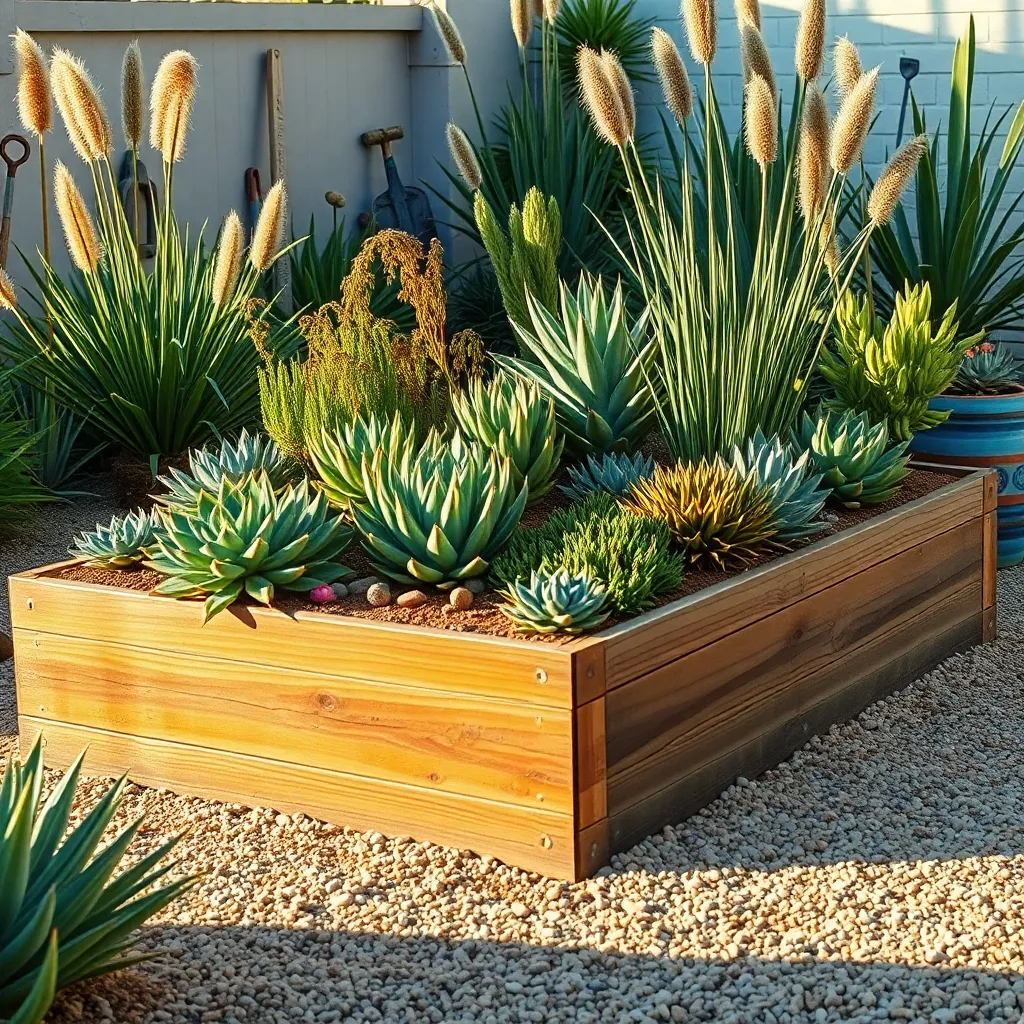
When choosing drought-tolerant plants for your raised bed garden, consider varieties that naturally thrive in arid conditions. Succulents, lavender, and rosemary are excellent choices that require minimal watering once established.
It’s important to select plants that match the sunlight exposure of your garden area. For example, full-sun locations are ideal for Mediterranean herbs like thyme and oregano, which can withstand prolonged dry spells.
Prepare your soil with a well-draining mix to support drought-tolerant plants. Incorporate organic matter such as compost or well-rotted manure to improve soil fertility and retain necessary moisture without waterlogging.
Advanced gardeners might consider using a mulch layer to further conserve soil moisture. A 2-3 inch layer of organic mulch like bark chips or straw can significantly reduce the frequency of watering needed.
Designing Efficient Raised Bed Layouts
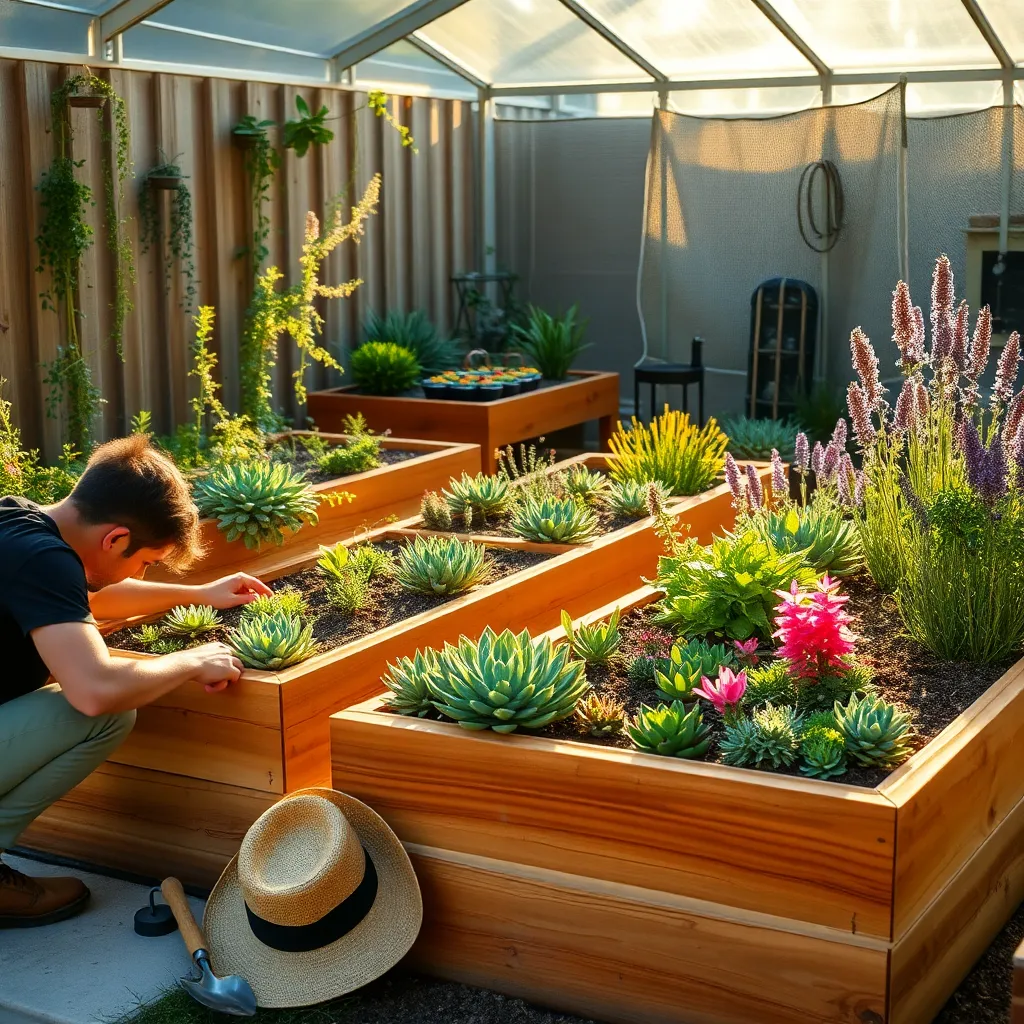
Designing an efficient raised bed layout starts with considering the dimensions and shape of your beds. Beds that are 3 to 4 feet wide allow easy access from both sides, minimizing the need to step on the soil, which can compact it and hinder plant growth.
Incorporate pathways between beds to facilitate easy watering and maintenance without disrupting plant roots. Aim for paths at least 18 inches wide to comfortably accommodate a wheelbarrow or garden cart for transporting materials.
Plan your plant arrangement based on the sun’s path to maximize exposure for sun-loving plants and provide shade for those that prefer cooler conditions. Group plants with similar water and soil needs together, as this will make your watering routine more efficient and prevent overwatering or underwatering.
Consider the vertical space by using trellises or stakes for climbing plants like tomatoes and beans, which can save ground space and improve air circulation. For more advanced gardeners, integrating a drip irrigation system can greatly enhance your garden’s water efficiency, ensuring each plant receives the right amount of moisture directly at the root zone.
Building Durable Raised Bed Structures
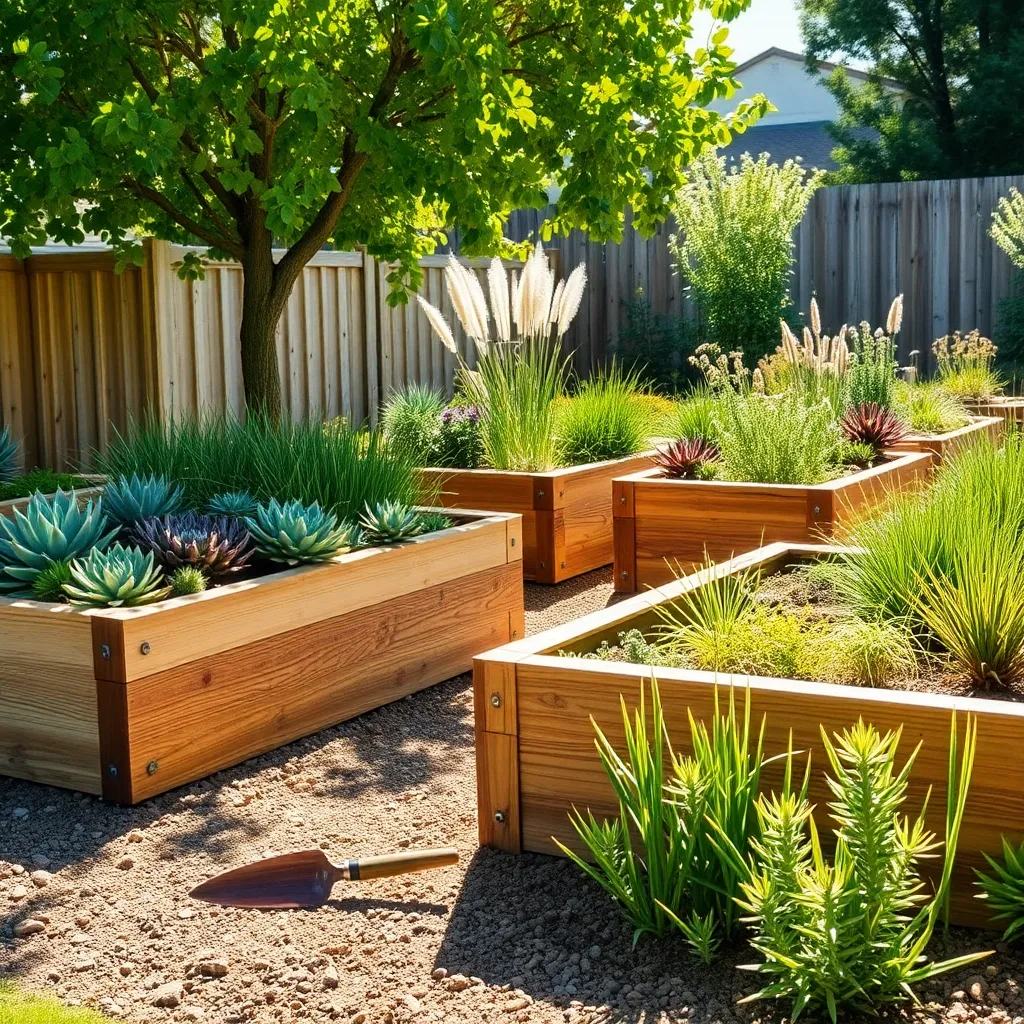
Creating durable raised bed structures is essential for a thriving low-water garden. Begin by choosing materials like cedar or redwood, which are naturally rot-resistant and can withstand harsh weather conditions.
To ensure stability, construct your raised beds with a depth of at least 12 inches, promoting healthy root growth and moisture retention. For added durability, use galvanized screws or bolts, which resist rust and prolong the life of your structure.
Consider lining the base of your raised beds with hardware cloth to prevent pests like gophers and moles from invading. This simple step can save your crops from being disturbed while maintaining a healthy balance with the surrounding ecosystem.
For gardeners looking to maximize water efficiency, integrate a drip irrigation system within your raised beds. This method delivers water directly to the plant roots, minimizing evaporation and ensuring consistent moisture levels.
Optimizing Soil for Water Retention
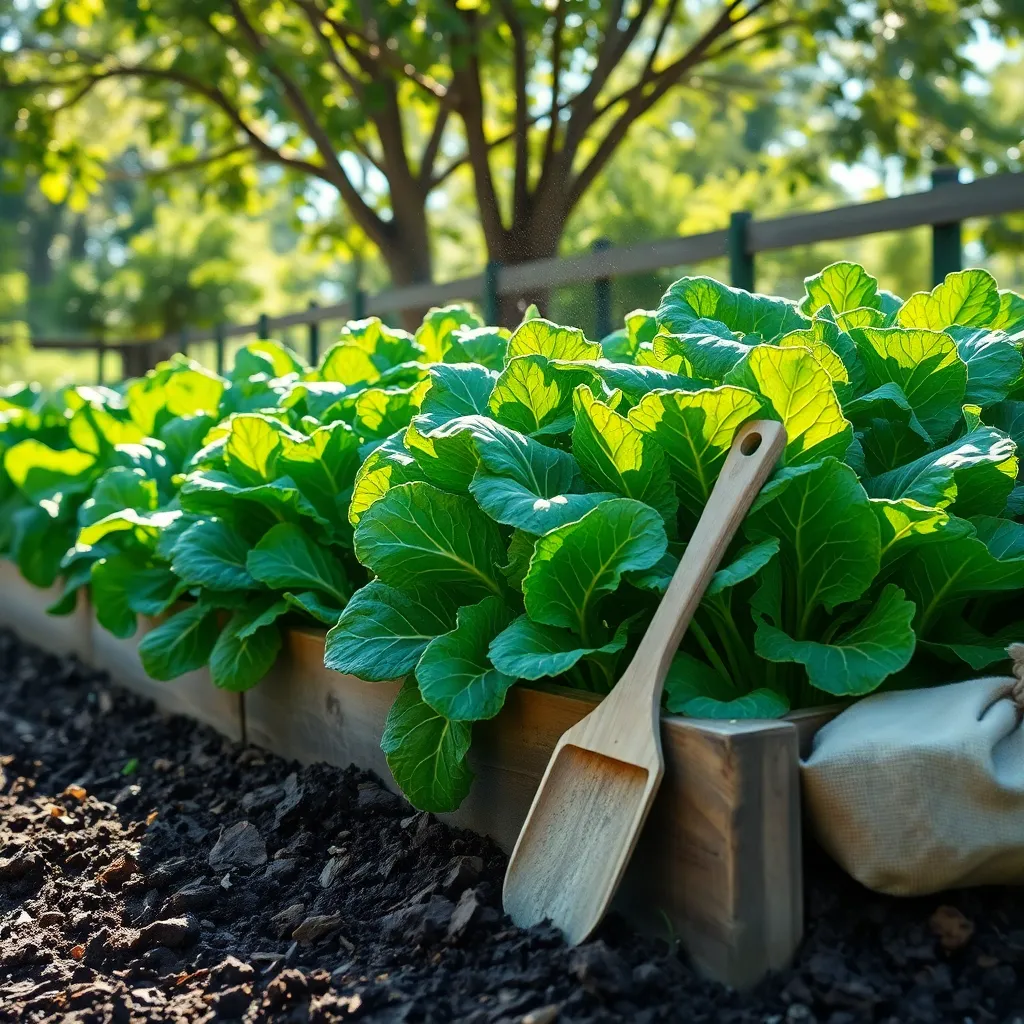
Optimizing soil for water retention is crucial for low-water raised bed gardening. Begin by incorporating organic matter such as compost or well-rotted manure, which improves the soil’s ability to hold moisture.
Another effective method is adding coconut coir or peat moss, both of which enhance soil structure and water retention capabilities. These materials are particularly useful in sandy soils that tend to drain too quickly.
Mulching is a simple yet powerful technique to retain moisture and reduce evaporation. Apply a layer of organic mulch like straw, shredded leaves, or bark chips, ensuring it’s about two to three inches thick.
For those looking to take it a step further, consider using water-retaining crystals or gels that absorb and slowly release water into the soil. These products can be particularly beneficial in arid regions or during periods of drought.
Incorporating these strategies not only conserves water but also fosters healthier plant growth. With improved soil moisture, plants are more resilient, reducing the frequency of watering needed in your raised beds.
Implementing Mulching Strategies
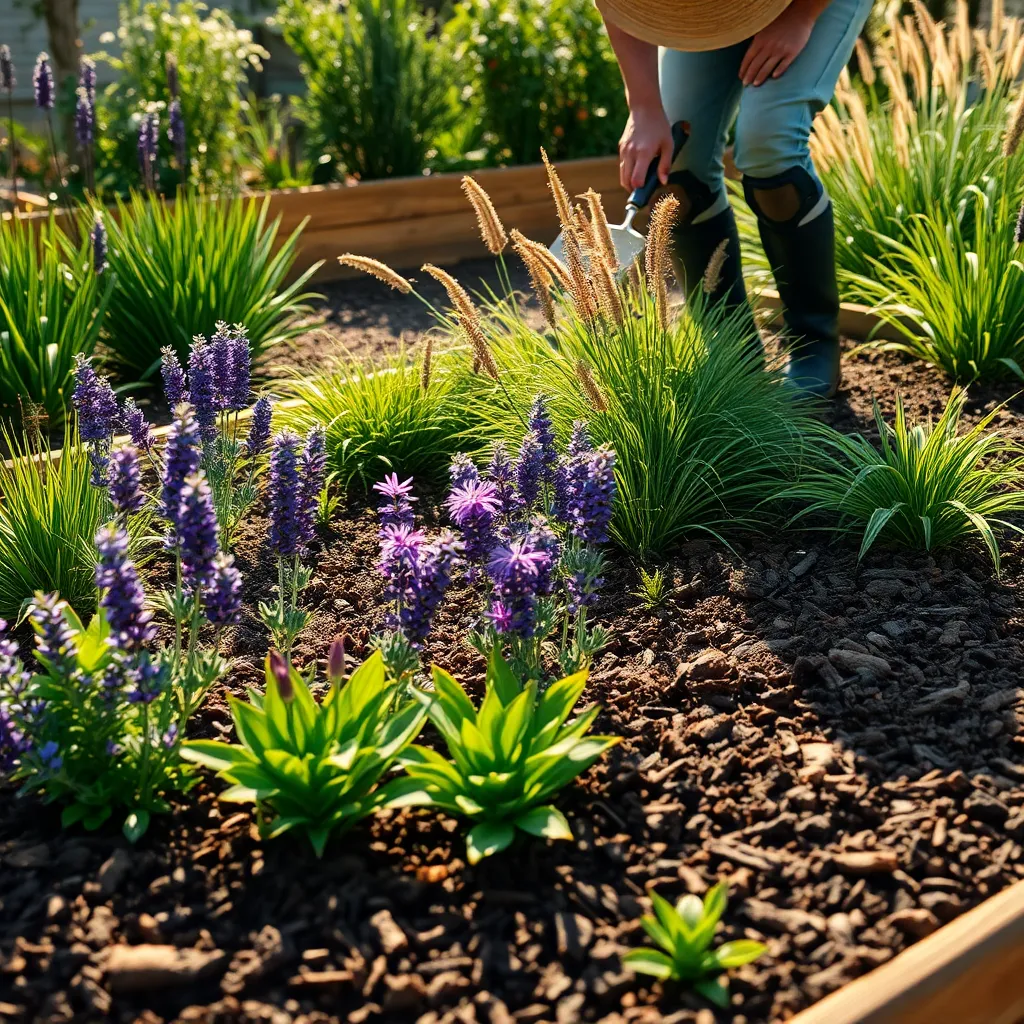
Mulching is a powerful technique to improve water retention in your raised bed gardens. By adding a layer of organic or inorganic material, you can significantly reduce evaporation and maintain soil moisture, making it a vital strategy for low-water gardening.
Organic mulches such as straw, shredded leaves, or wood chips are excellent choices because they gradually decompose, enriching the soil. As they break down, these materials also help to improve soil structure, enhancing its ability to retain water and nutrients over time.
When applying mulch, aim for a layer that is about 2 to 4 inches thick. This depth is sufficient to suppress weeds, which compete for water, while also providing insulation against temperature fluctuations that can dry out the soil.
For those looking to maximize water conservation, consider using inorganic mulch options like gravel or pebbles. These materials reflect sunlight, reducing soil temperature and evaporation rates, and are particularly effective in hotter climates.
Installing Drip Irrigation Systems
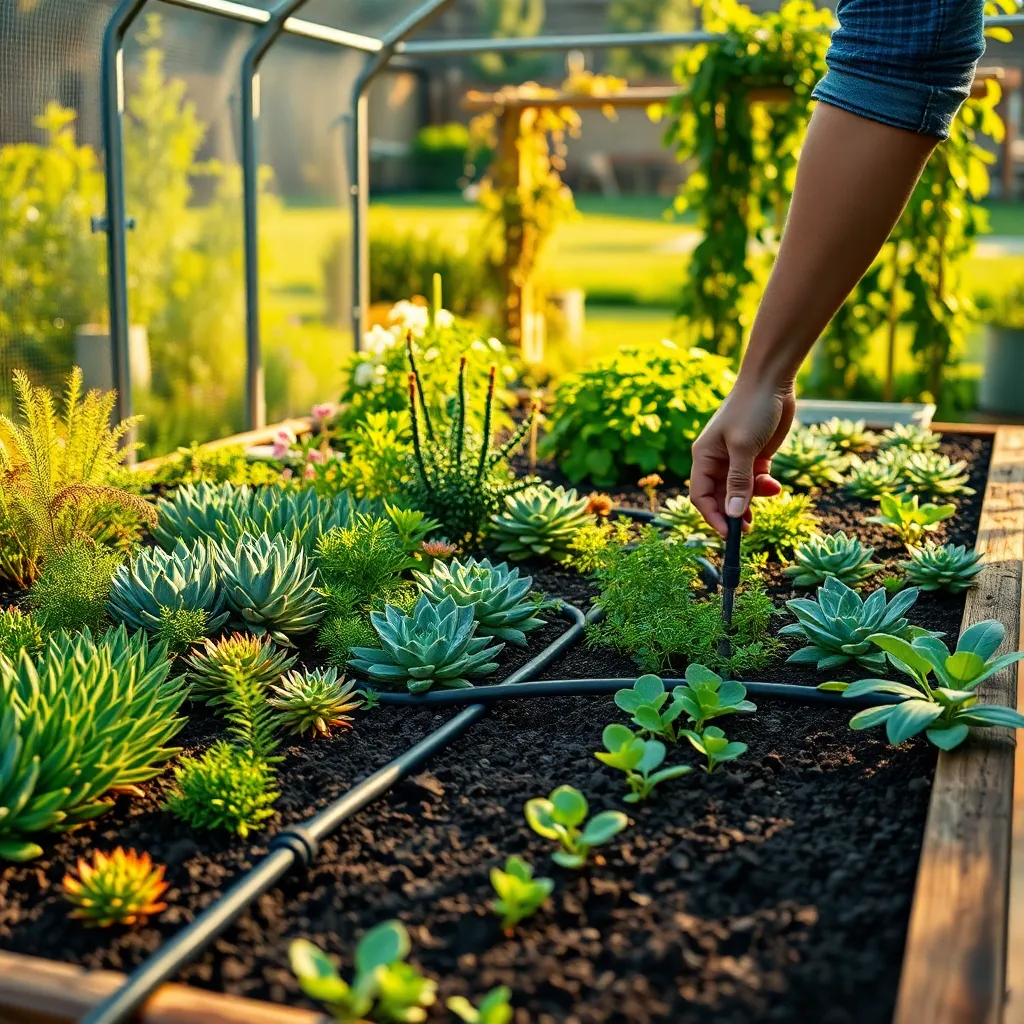
Drip irrigation systems can be an excellent way to ensure your raised bed garden receives the right amount of water without waste. By delivering water directly to the plant roots, these systems help to conserve water and reduce evaporation, making them ideal for low-water gardens.
Starting with a basic setup, you’ll need a drip irrigation kit, which typically includes tubing, emitters, and connectors. Choose a kit that matches the size of your raised beds and plan the layout to ensure every plant gets adequate water coverage.
To install, lay the main tubing along the length of your raised beds, securing it with stakes. Attach emitters at regular intervals, ensuring they are placed near the base of each plant for direct root watering. Keep tubing and emitters at least 2 inches away from the plant stems to prevent rot and encourage deep root growth.
Once installed, set a timer to control watering frequency, adjusting it according to seasonal changes and specific plant needs. For most vegetable gardens, watering early in the morning is best to reduce evaporation and allow excess moisture to dry throughout the day. Advanced users might consider adding a pressure regulator and filter to extend the system’s lifespan and maintain consistent water flow.
Utilizing Companion Planting Techniques
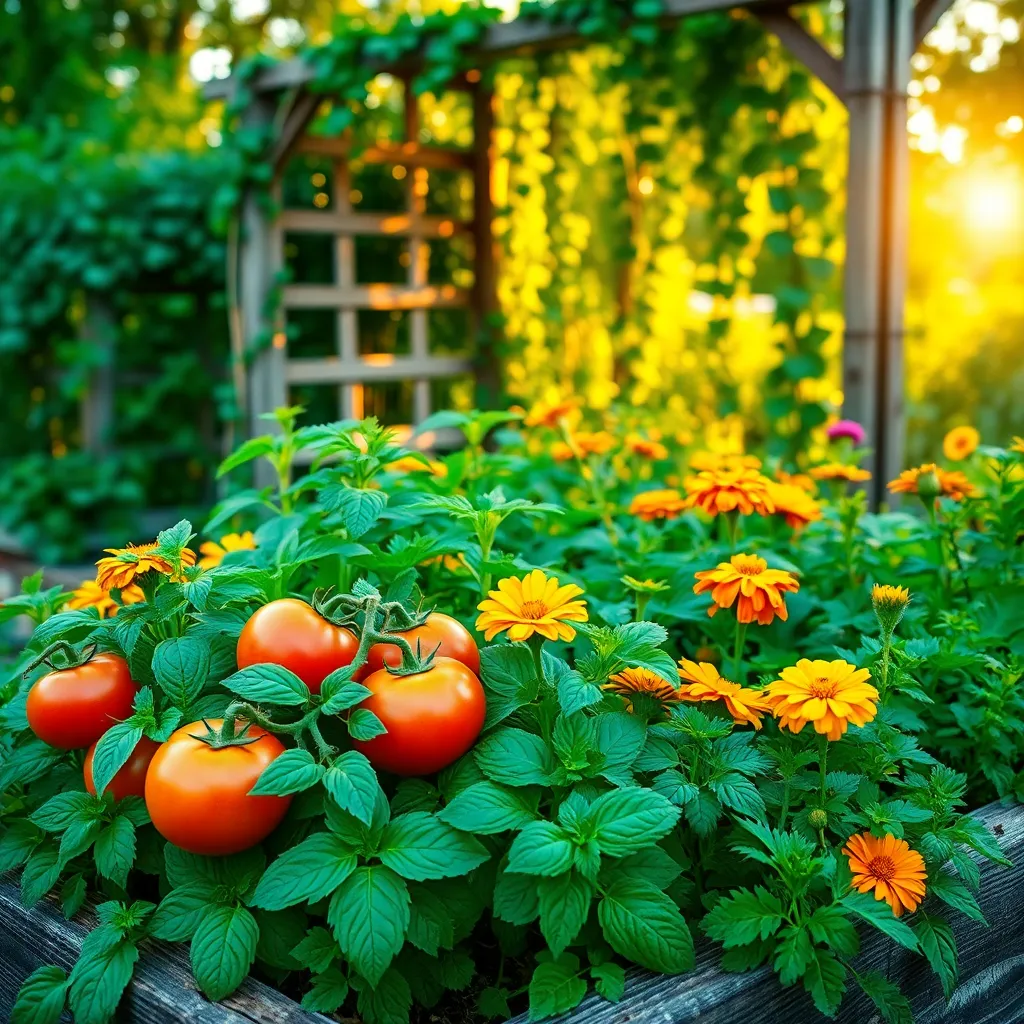
Companion planting is a simple way to maximize the benefits of your low-water raised bed garden. By growing certain plants together, you can enhance growth, deter pests, and boost soil health naturally.
For example, pairing tomatoes with basil not only enhances flavor but also helps repel pests. Basil’s strong scent can deter insects like aphids, which commonly trouble tomato plants.
On the other hand, consider planting marigolds around the edges of your raised beds. Marigolds are known to repel nematodes and other soil-borne pests, providing a natural defense without extra water usage.
Advanced gardeners might try the “Three Sisters” technique, combining corn, beans, and squash. This method supports mutual growth benefits, with corn providing a natural trellis for beans, and squash shading the soil to retain moisture.
Seasonal Maintenance for Water Conservation
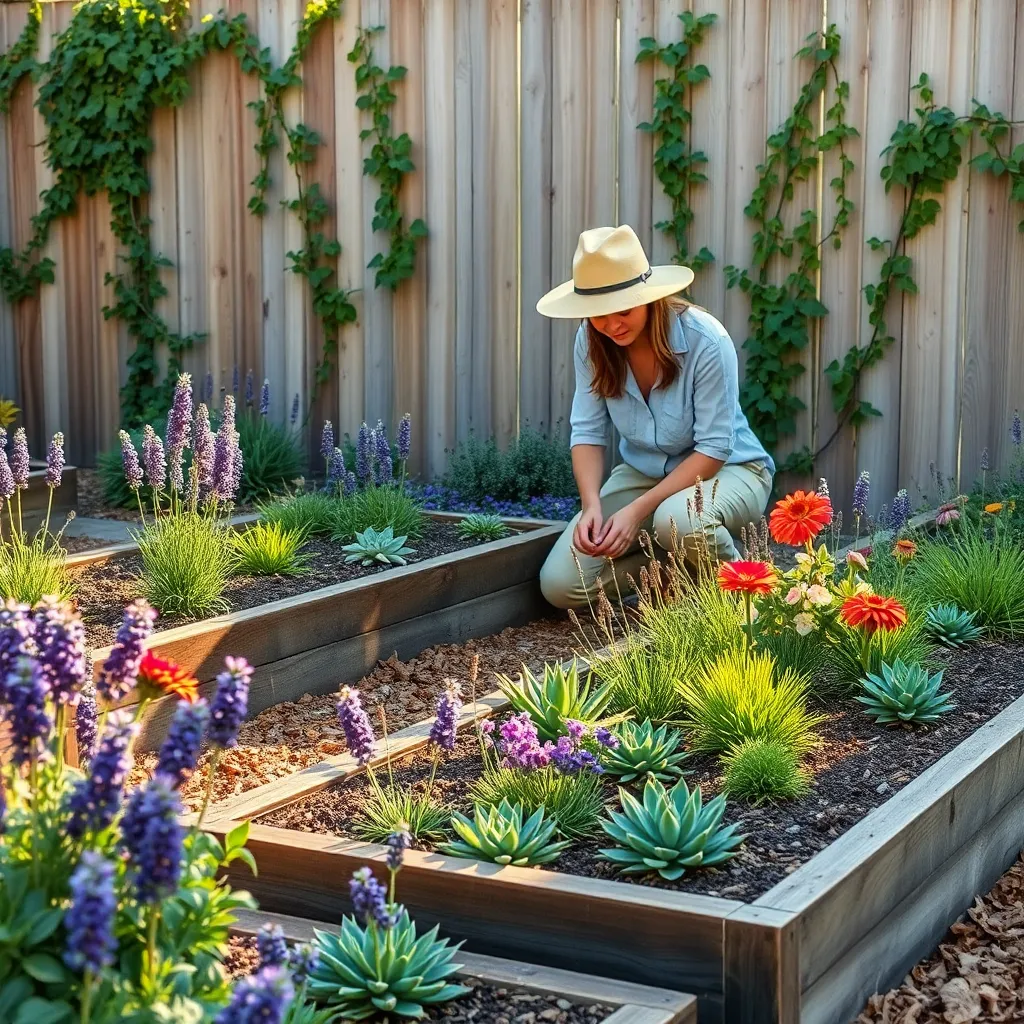
Water conservation is an essential aspect of sustainable gardening, particularly in raised bed gardens. Begin by using a layer of organic mulch, such as straw or shredded leaves, to cover the soil, which will help retain moisture and reduce evaporation.
Incorporating drip irrigation systems can significantly enhance water efficiency. These systems deliver water directly to the roots, minimizing waste and ensuring that plants receive adequate moisture without overwatering.
Choosing plants that are naturally drought-tolerant can further enhance water conservation efforts. Consider species like lavender or succulents, which require less frequent watering and thrive in well-draining soil.
For gardeners seeking advanced techniques, consider implementing a rainwater harvesting system. Collecting rainwater in barrels provides a sustainable source of water that can be used during dry periods, reducing reliance on municipal water supplies.
Evaluating and Adjusting Garden Plans
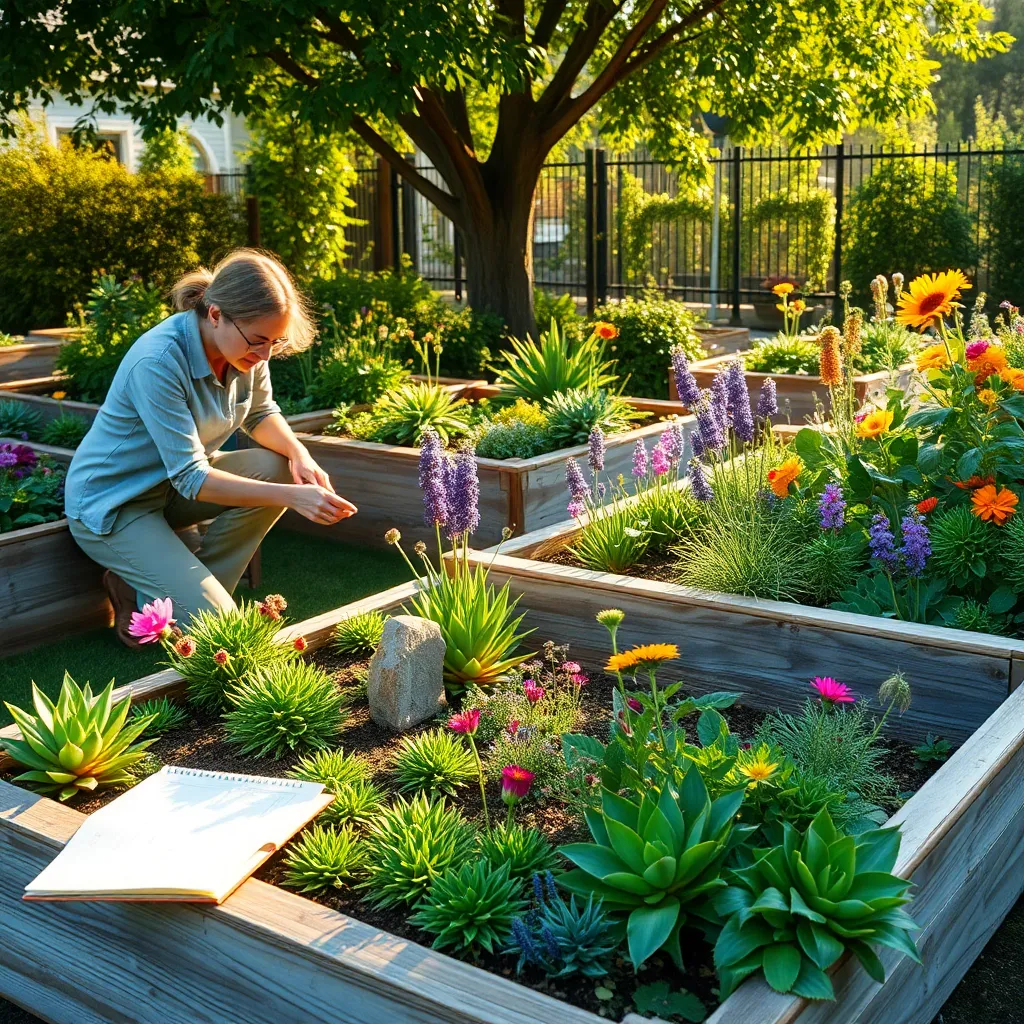
When evaluating your garden plans, it’s crucial to assess both the success of your crops and the efficiency of your water usage. Begin by analyzing which plants thrived and which struggled, noting their specific water needs and sunlight exposure.
Adjusting garden plans involves making precise changes to improve outcomes. Consider rotating crops to different beds each season to prevent soil nutrient depletion and pest buildup.
It’s important to tailor your soil mix to suit the needs of your selected plants. For low-water gardens, use a well-draining soil blend enriched with organic matter, such as compost, to retain moisture efficiently.
To further enhance your low-water garden, incorporate mulch like straw or shredded leaves to reduce evaporation and keep the soil temperature stable. Mulching not only conserves water but also suppresses weeds, which compete with your plants for nutrients.
Experiment with different watering techniques to find the most efficient method for your garden. Consider using drip irrigation or soaker hoses, which deliver water directly to the plant roots, reducing evaporative losses.
For gardeners looking to push their skills further, try integrating water catchment systems to maximize rainwater use. Installing rain barrels or designing swales can provide an eco-friendly water source that supports a sustainable garden.
Conclusion: Growing Success with These Plants
In exploring the ’10 Low-Water Raised Bed Garden Plans,’ we’ve discovered that nurturing a thriving relationship is much like tending to a well-planned garden. The key concepts highlighted include communication, trust, shared goals, adaptability, quality time, appreciation, conflict resolution, independence, support, and growth. Each concept functions as a vital ingredient in cultivating a healthy, resilient partnership.
Now, take the first step towards enhancing your relationship by choosing one of these concepts to focus on this week. Whether it’s dedicating more time for honest conversations or finding new ways to show appreciation, small, consistent efforts can yield significant rewards.
As you embark on this journey, make sure to save or bookmark this article. It’s a valuable resource that you can revisit whenever you need a gentle reminder or fresh inspiration.
Remember, the seeds of a successful relationship are planted with intention and nurtured through ongoing effort. Embrace the opportunity to grow together, and watch as your bond flourishes, rooted deeply in understanding and love. With each step, you’re laying the groundwork for a future of lasting happiness and fulfillment.

